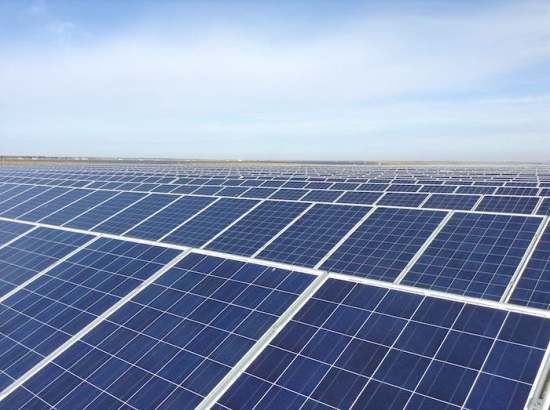Evidence of the quantity of electricity sold by BC Hydro to its residential, commercial and industrial consumers comes from audited sales records of BC Hydro. That unit sales are unchanged since 2004 is indisputable.
The difficulty justifying billions of dollars spent to meet a need that has not existed has been no problem for people who benefit from the expenditures. After years of arguing falsely that more electricity has been needed to serve population growth, now they contend that vastly more capacity is required for electric vehicles.

Unfortunately, the BC government accepts the assertion without listening to independent expert analysis. Special interest groups play an important role in the process that undermines good economic policy.
Dr. Fereidoon Sioshansi is a California consultant serving the energy industry internationally. He published a 2018 article that reports demand for electricity will continue soft for many years to come.
Some in the industry are literally salivating at the prospects of EVs and, more broadly, the electrification of the transport sector to boost electricity demand…
That, however, may be wishful thinking, according to an analysis by James Moore, partner in capital goods research at Redburn in London. Moore and his colleagues, who have looked at the numbers, do not expect the electrification of the cars to dent the established trends towards reduced electricity consumption.
The reason? Ever more energy-efficient lighting and motors will offset any gains in increased EV electricity consumption. This, of course, is not what people in the power sector want to hear…
In fact, Redburn’s research leads them to conclude that motors are the world’s biggest electricity-using product, ahead of lighting, accounting for an astonishing 30-35% of world’s electricity consumption. Not surprisingly, as motors get more efficient, demand for electricity can be expected to fall, all else being equal.
According to Redburn, the prevailing standard efficiency IE1 motors are being banned and premium efficiency IE3 motors will become mandatory around the world – saving as much as 13% depending on the size of the motor. Moore says it will take roughly 15 years for the entire installed motor base to be replaced with the new standard, which will reduce global electricity demand by 0.7% per annum.
A similar scenario applies to lighting – currently accounting for roughly 22% of the global electricity demand. Here again, significant reductions in consumption can be achieved by switching to more efficient types of lighting, such as light emitting diodes (LEDs), which currently account for 20% of new global lighting unit sales.
The savings can be significant – for example:
● 90% by replacing incandescent light bulbs with LEDs
● 75% by moving from compact fluorescent lights to LEDs
…According to Redburn: “We only expect EVs to add 3% to global electricity demand by 2035, the equivalent of 0.2% per annum demand growth.
As such, while many players in the power industry talk about EV as the next big thing, we do not expect the electrification of the car to in any way dent the electricity consumption reduction caused by more energy-efficient lighting and motors.”..
BC has no certain idea of what electricity from Site C will cost. They cannot have because after five years of construction, the project is undergoing redesign, seeking solutions to serious geotechnical problems. Whatever it turns out to be, the per kWh cost of electricity from Site C will be a large multiple of alternatives, even without calculating the value of prime farmlands destroyed and human lives disrupted.
When it comes to utility-scale solar power, we have another world record to highlight and celebrate. Portugal recently held a solar power auction (in which power plant developers submit different bids for what price they can offer electricity under a new contract), and one of the bids broke the world record for the lowest solar power price.
The auction was an auction for 700 megawatts (MW) of solar power capacity, with granted awards totaling 670 MW. Of those, 483 MW also include an energy storage component.
The lowest winning bid was to supply solar electricity to the grid at a price of €0.01114/kWh (or ~1.327¢/kWh). The bid slightly beat the AED 4.97 fils/kWh (or 1.35¢/kWh) record-low bid in Abu Dhabi..
https://cleantechnica.com/2020/08/30/new-record-low-solar-price-bid-1-3%c2%a2-kwh/

Categories: BC Hydro




what site c electricity is going to cost? well at least $10B and counting. who is going to pay for it? The only question is how. Will it be by increasing electricity rates or through taxes to bail out B.C. Hydro My guess is the later because if its the former, not many will be able to afford to turn on their lights or appliances. they’ll switch to gas and yes you can even get gas washers and dryers, etc.
During the COVID experience, there are reports people are saving more, paying off debts, etc. They’re buying less. If they’re doing all of that, they will reduce their electricity consumption also, its a way of saving money.
If The NDP want to save money they might as well figure out a strategy to kill site C, blame B.C. Hydro and the B. C. Lieberals and be done with it. I’m sure with the right P.R. strategy it will work out just fine. I’m sure the people handling the Lincoln project in the U.S.A. wouldn’t mind handling this and boy are they good.
LikeLike
That’s amazing, the savings through retrofitting motors.
A personal story, attesting to the efficiency of new tech:
I got a used made-in-Vancouver Ohm e-bike last year and usually pedal at a fast pace, along with e-assist, to maintain a 30 km/h speed — but yesterday, I conducted an experiment, using only the thumb-activated e-drive. No pedal power. (This option is only available on bikes with the motor in the front or back wheel hub. If the motor is in the crankcase, you have to pedal to get e-assist.)
On fairly flat land, I did an out-and-back ride on the backroads and dikes of north Chilliwack. On the top side of the battery, it can maintain about 28 km/h. As the battery drains, maximum speeds are in the lower 20s.
It’s not best-practice to totally drain the battery, but for this experiment I drew it down to no bars of power showing on the screen — and there was a warning beep from the battery, as I rolled into the driveway after travelling 20 kms.
I assumed the brushless motor in the rear hub would be warm from the workout (and warmth is a sign of inefficiency) — but when I touched the motor housing, it was cool.
Even cooler: I have a phone app that works with my wifi-controlled WiON power bar. One of the functions measures the amount of current flowing through the power bar, so I can see how much it costs to run whatever is plugged into it.
The recharge cost, for 20 km of travel was about 3 cents. The same trip would have burned over $3.00 in fuel in most internal combustion cars.
Similarly, I used my battery-powered weed whacker and lawn mower for front and back lawns last week: and again, it was about 3¢ total, to bring the two batteries back to full charge.
I know the batteries won’t last forever… but in the meantime, you truly can go a long way on a dime’s worth of hydro power — thanks to new technology.
LikeLike
This is the kind of experience John Haig often spoke of when we talked about conservation ideas for electricity consumption. He retired as a professional from BCUC. Too bad the staff were often sabotaged.
LikeLike
who is truly in control of BCHydro?
LikeLike
The only way to answer that question is to follow who has enriched themselves on the misdeeds of BC Hydro.
I fear the real answer will be “no one is in control” which is the worst scenario as it becomes very difficult to punish anyone for misdeeds and even more difficult to right the ship if there is no steering wheel.
LikeLike
It’s fairly obvious that there’s no one in control! Like a self driving car pre Tesla.
I just wish it’d go off the road!
LikeLike
BC Liberals under Clark are guilty of building Site C
because she thought it would really help her
election. Also BC Hydro engineers missed the
boat in picking this site as suitable in the
design stage. Federal passed the permits
to allow it to be built. Big powerful interests
from south of the border wanted it built
to power oil and natural gas fields.
LikeLike
The point is though that there is no need for the dam for the foreseeable future, and given the drop in prices for alternative, renewable, and less destructive electricity generation, there won’t be in the longer term either. Powering oil and gas fields is not in our best interests and isn’t in the interests of anyone, no matter how powerful they are. Our government can educate them rather than subsidize them.
LikeLike
Hi Norm; As you correctly point out there has been a 2 decades story about electricity need in BC.
The story has ever changing reasons given in support of borrowing and building more generation plants because somewhere there ae folks who want cheap electricity but don’t want the financial burden of paying for the energy.
In the past people thought of this arrangement as colonial but today one could likely be right in referring to it as being NERC d.
Citizens have filled the need of others by guaranteeing the almost $80 billion of un-needed production.
LikeLike
Hi Norm,
I’ve been thinking a lot about EV popularity and the eventual transition completely to EV’s. I was just starting to formulate a question on long term electricity consumption due to the hypothetical increase in EV use thinking that maybe site C will help matters.
Then, just today, I’m ready with my question and this precise column deals entirely with an answer to it.
I will keep this study in mind if I’m around to see how things unfold.
LikeLike